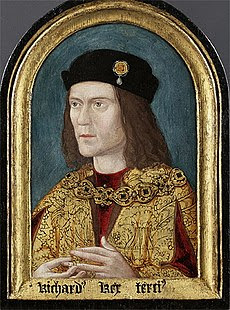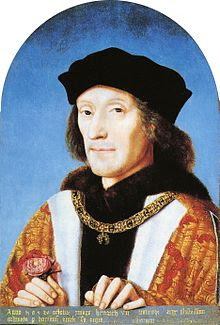Two.
Mortimer should be King of England.
to his son, the later Edward IV.
Thank you for your e-mail.
Please see below the feedback from the Editorial Team regarding the feedback that you have given.
OK, we’ve made a couple of small changes to this article, based on the reader’s message.
“Changing ‘usurped’ to ‘overthrown’ to acknowledge the contention of the legitimacy of the York claim based on the ‘Mortimer Claim.’ Also mentioned the 14th century practice among the nobility of privileging heir-male claims over heir-general claims.”
TO THE EDITOR TEAM OF BRITANNICA CUSTOMER SERVICE
Dear Sir/Madam
Thanks very much for your reaction and especially
for the changes in your article about the House of
York, which I have criticized for two points:
Your use of the word ”usurpation” about the ascendancy
of King Edward IV [after the succesful victory at Towton
in 1461], which deposed King Henry VI.
And secondly, your reference to the ”weakness” of
the claim to the throne of Richard of York [father to King Edward IV]
from females,
having a superior claim from his mother”s side, descended from
Lionel of Antwerp, the second son of King Edward III, while
the Lancaster Kings descended from John of Gaunt, the third
son of King Edward III
See my comments
´´USURPATION´´ OF EDWARD IV
Now it is an honour to me, that your team has made changes in your article
and I will emphasize that these are no small changes,as you write, but crucial.
Because it is crucial to explain to your readers, that
Edward IV did overthrow the House of Lanccaster,
BUT NOT USURP THE THRONE,
because of his father´s superior claim according to his descendance
of Lionel of Antwerp.
WERE IT NOT FOR THE USURPATION (For that was a real one)
OF THE LANCASTERS (Richard II´´s cousin Henry Bolingbroke, son
of John of Gaunt and the later King Henry IV), RICHARD OF YORK´S
UNCLE, EDMUND MORTIMER ¨(Richard II´s heir presumptive, inherited
from his father, Roger Mortimer) HAD BEEN KING OF ENGLAND
AND AFTER HIS DEATH RICHARD OF YORK, SON OF HIS SISTER,
ANNE MORTIMER.
You write in your new version ´´overthrown´´ instead of
´´usurpëd´´
So far, so good.
Thanks.
Also I am very content about your emphasizing of the Mortimer
claim to the throne
You write
and
´´Yet it was founded upon strict principles of lineal descent, for the 3rd Duke of York was descended from Lionel, Duke of Clarence, the second surviving son of Edward III, whereas the house of Lancaster came of
John of Gaunt, a younger brother of Lionel.´´
VERY GOOD.
SOME ADDING COMMENTS OF CRITICISM
THE USURPING LANCASTER KINGS
However I think it is pitiful, that you didn´t explain,
to your readers, that the ´House of Lancaster itself not only had
a lesser claim to the throne, but came into power
by means of usurpation of King Richard II, as I pointed
out in my earlier letter to you
This is also confirmed in the book of Alison Weir about the
Wars of Roses.
I quote Weir
´´‘Certainly Henry IV and the Lancastrian Kings, who succeeded
him, were usurpers”
3
THE USURPING DYNASTY, PAGE 40
ALISON WEIR
LANCASTER AND YORK, THE WARS OF THE ROSES
I repeat, were Richard II not usurped by Henry Bolingbroke
the maternal uncle of Richard of York, Edmund Mortimer
should be king, and subsequently, Richard of York.
However, with you I think, that he would never have
claimed the throne, if politics were not escalated by
King Henry VI´s weak rule, as Queen Margaret´s ill
political insight as her favouritism of uncapable and
corrupt advisors as the Duke of Suffolk and later, Somerset.
RIGHT TO THE THRONE BY FEMALES
Now another point, that I like to add is your´
comment on the descendance through
the female line.
About the legitimacy of the inheritance through females
you wrote
´´One thing that might possibly have been considered an element of weakness in Richard’s claim was that it was derived through females—an objection actually brought against it by Chief Justice
John Fortescue´´
And after my criticism, that inheritance through female
lines did not ´´weaken´´ a claim, you have added
´´(probably a reflection of the increasingly common practice among the English nobility of passing on their estates to a male heir)´´
Now your addition is an explanation of Chief Justice
Fotescue´s reaction and of course that is Medieval
thinking about the rights and position of women.
But in my letter to you I pointed out to you,
that whatever may have been the prejudices
against women´s roles and their passing their
inheritance on their offspring , men used those
rights (which were also acknowledged) whenever
it suited them, since there was (according to the rights
to the throne) no Salic Law in England.
That men were not comfortable by descendance
from female line is a whole other matter.
But it was legal as valid.
Otherwise, Richard of York could not have made
his maternal claim to the throne and he could not
have been Henry VI´s heir presumptive ¨(after the
death of Henry´s uncle Humphrey, Duke of Gloucester)
untill the birth of Henry and Margareta of Anjou´s son,
Edward of Westminster.
Here come, again, four strong examples of
Kings or men of high nobility, who claim
their rights from a woman.
King Henry II ¨(father to Richard Lion Heart and King John I,
Lackland and son of Queen Maud, who was the heir
of her father, King Henry I by the oath he made the barons
swear to acknowlegde her as his heiress. From his
mother´s right to the throne, he inherited the English throne)
Stephen of Blois, the great rival of Queen Maud during
the civil war (the ´´Anarchy´´), who expelled Queen Maud
and took the throne.
He based his right (apart of ´´preservation of order´´) on
the fact, that he was a MATERNAL grandson of William
the Conqueror.
Edward III, who based his claim on the French throne
on the fact, that he was the closest kin of the late
King Philip IV, his MATERNAL grandfather.
One of the direct causes to the Hundred Year´s war with
France.
And last, but not least
THE LANCASTER CLAIM TO THE THRONE.
Realising, that Richard of York´s maternal
uncle, Edmund Mortimer had a superior
claim to the throne (and was also Richard II´s heir
presumptive), King Henry IV alleged that his MATERNAL
ancestor, Edmund Crouchback, the son of
King Henry III and younger brother to the later King
Edward I.
According to the Lancastrians, Edmund Crouchback was
in reality the eldest son of King Henry III, but overlooked
because of his physical deformacy.
That would made Edward I, and subsequently
Edward II, Edward III and Richard II to usurpers.
Regrettably to the Lancastrians, there was no proof,
whatsoever, that Edward I was not the eldest son
of King Henry III.
So this Lancaster claim was null and void.
However it´s interesting that four Kings or seizers
to the throne (Stephen of Blois and Henry IV) based
themselves on claims by females.
And it would have been nice, when you had added to your
article, that not only female rights (even if they were
overlooked) were as valid as men, but that subsquently
Stephen of Blois, King Henry II, Edward III as Henry IV had
either inherited from female line or based their claim
on it.
See more extended
If you would consider to do some changes yet, I would
appreciate that.
But thanks to your additions anyway.
I will place this comment on your website and
will send it to your feedback page.
See also
Kind greetings
Astrid Essed
Amsterdam
The Netherlands

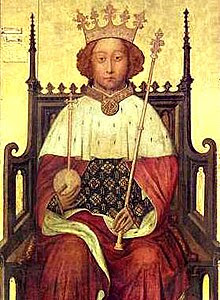
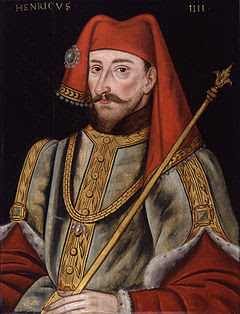
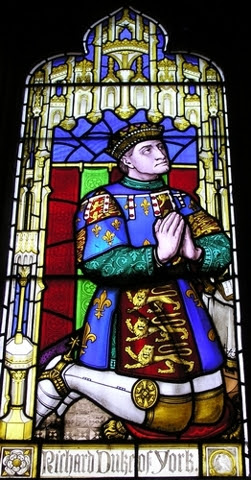
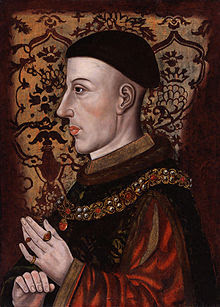
.jpg)




